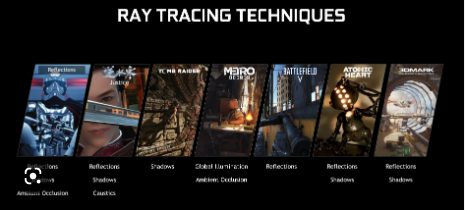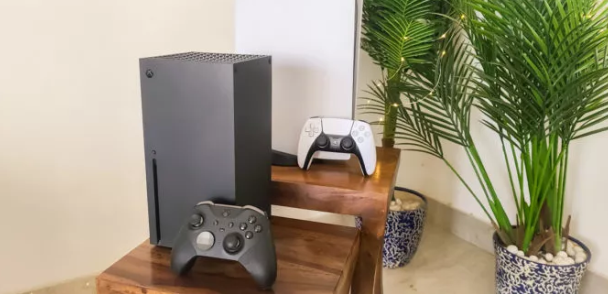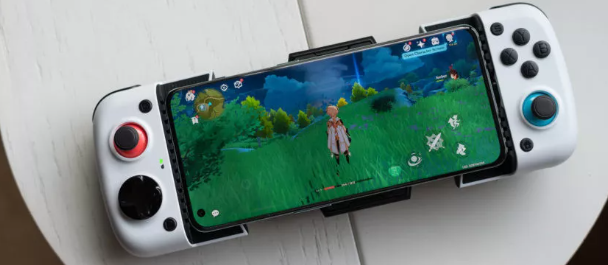With Qualcomm’s announcement of the Snapdragon 8 Gen 2, plenty of features are supposed to come into existence, but the headline-grabbing is the smartphone ray tracing graphics support. The hardware ray tracing actually opens the door to many new graphical effects or mobile games. In fact, 2023 handsets are all set to support this feature; now the question is, Will it be a perfect deal or not?
Though Smartphone ray tracing is a nice feature, there are chances hurdles can come your way. We have created this post so as to do a clear ray-tracing reality check. We have done checkouts on various aspects:
All Ray Tracing Implementations are Not Equal

Ray tracing is a graphical term that brings many possible implementations. Various levels are signifying each with its own benefits and associated performance costs. So, if you have smartphones supporting rat tracing, games will still be on consoles and PC. Now, the thing comes to you whether you render an entire scene with expensive ray tracing or rely on a hybrid approach that only uses ray tracing for some effects.
As a matter of fact, mobile ray tracing hardware is considered less potent than consoles and PCs. According to ray tracing architectures by Qualcomm and Arm, both accelerate the core box and triangle intersections, for starters. These are actually the fundamental building blocks of ray tracing. Unfortunately, no metrics can tell us what sort of actual work performance and graphical capabilities are required. But when it comes to Qualcomm, it supports BVH(Bounding Volume Hierarchical. BVH acceleration is actually essential because of the ability to speed up ray intersection math.
Qualcomm supports reflections, shadows, and global illumination, whereas Arm uses hybrid rasterization to enhance lighting, shadows, and reflections as well. Since these features require more and more processing power, we can’t imagine how far the first smartphone chips can push support with what frame rate. Other aspects of ray tracing acceleration, such as denoise and memory management, can be fine-tuned to improve performance too.
Smartphone Ray Tracing Feature Won’t Scale Like Consoles

Certainly, a smartphone chip designed for a sub-5W graphical power will not scale up to the performance levels of a games console/PC graphics card. The latest graphics card by Nvidia is a 320 W behemoth, but the PlayStation 5 and Xbox Series X consume around 200 W each, including CPUs. When we consider 4K resolutions with all the bells and whistles, it seems out of the question for the ray tracing feature. Oppo Company claims that it can achieve 60 fps at a modest 720 resolution ( sustained for 30 minutes while running on the Snapdragon 8 Gen 3 Platform). This clarifies that sustained performance can be an issue when limited cooling is available to the smartphone form factor. A hands-on demo by Qualcomm presented a short animation in which ray tracing on and off was done. As a result, we see the difference in lighting and reflections like day and night.
Game Support is Coming, But Mass Adoption Will Take a While

As per recent announcements by Mediatek and Qualcomm, the first mobile game with ray tracing will appear in the first year of 2023. This is the expected time when phones with this feature will make their way into consumers’ hands. MediaTek announces that it is working with all significant Chinese studios to support ray support in the future. Some markets can move to the support more before than others.
Is It Worthwhile to Buy a Phone for Ray Tracing?
Above all, we have discussed everything in detail. The conclusion is one should take time to buy a new phone only because it supports ray-tracing graphics. In order to crack a perfect deal, it is better to wait for second-generation ray tracing GPUs to boost performance up a notch. Since we expect the first ray-tracing phone to come before the end of the year, it is worth waiting until 2023 arrives. For more, you can refer to the most commonly asked questions given below.
Frequently Asked Questions
Is Ray Tracing Worthwhile?
The truth is that ray tracing will certainly make visuals more realistic but when it comes to games, adding ray tracing to all games isn’t much worthwhile.
Is It True That Ray Tracing Requires More RAM?
Yes, ray tracing is supposed to utilize much memory per the scene’s complexity. Let’s have an example; if you have a scene with many reflective surfaces or objects that are far away, there is a chance it will need more space compared to a more explicit scene.
Which GPU is Considered the Best for Ray Tracing?
RTX 3090 by Nvidia is considered the best as it is the company’s fastest and most expensive graphics card. Other top-rated GPUs are:
- ZOTAC Gaming GeForce RTX 3060 Twin Edge OC
- PNY GeForce RTX 3060 Ti Graphics Card
- MSI Gaming GeForce RTX 2060 Graphics Card
- ASUS ROG STRIX NVIDIA GeForce RTX 3090
- PowerColor Red Devil AMD Radeon RX 6700 XT Graphics Card
- EVGA GeForce RTX 3060 XC Gaming Graphics Card
Visit Site – cricut.com/setup
Source :- https://cricut-cut.com/smartphone-ray-tracing/




Comments